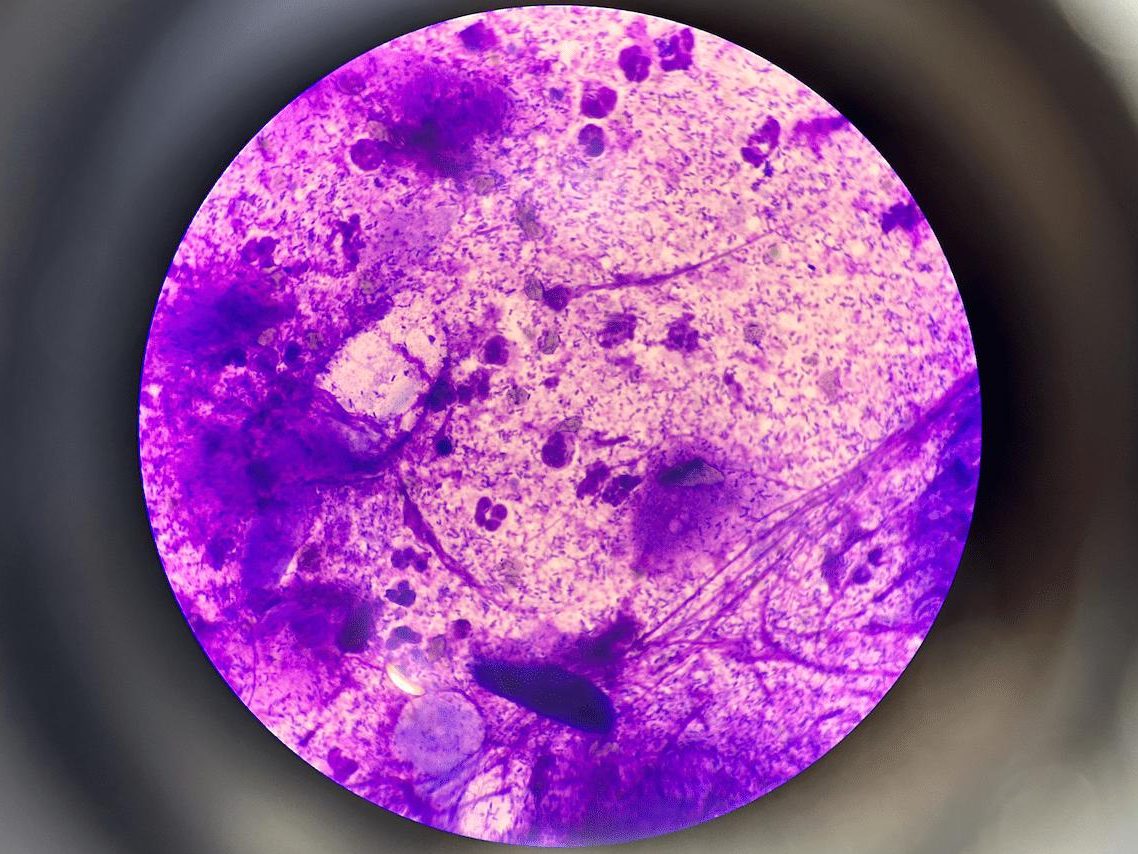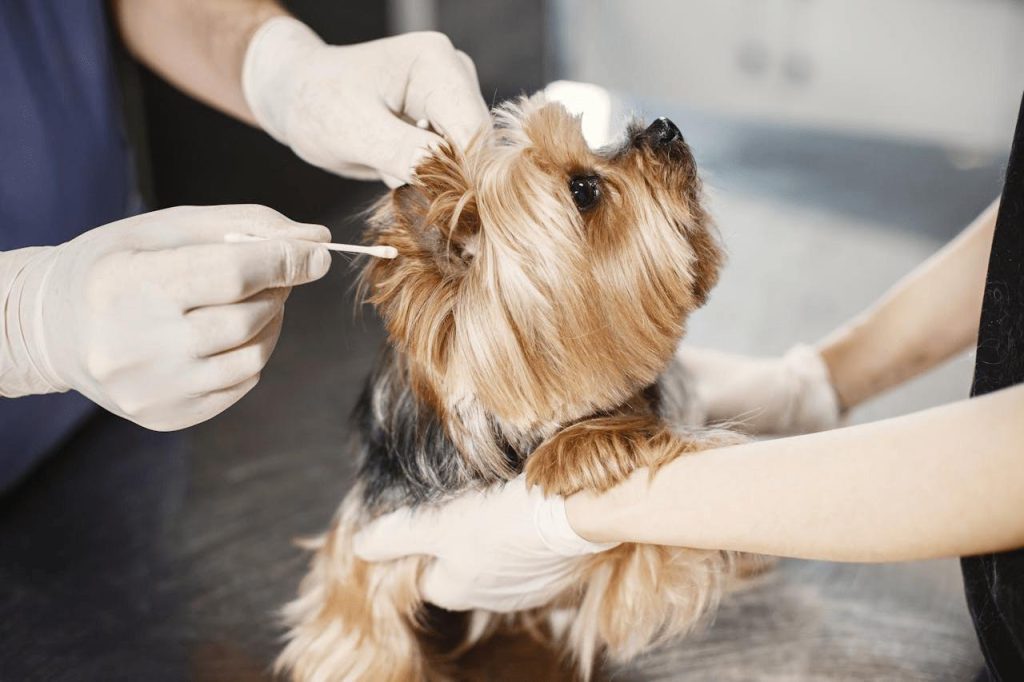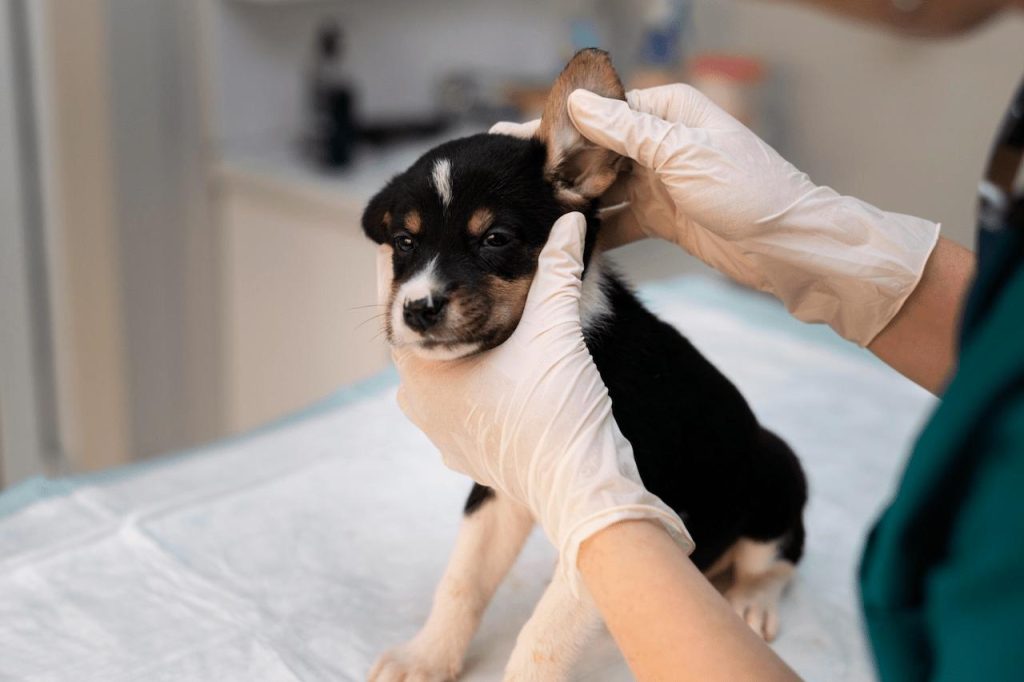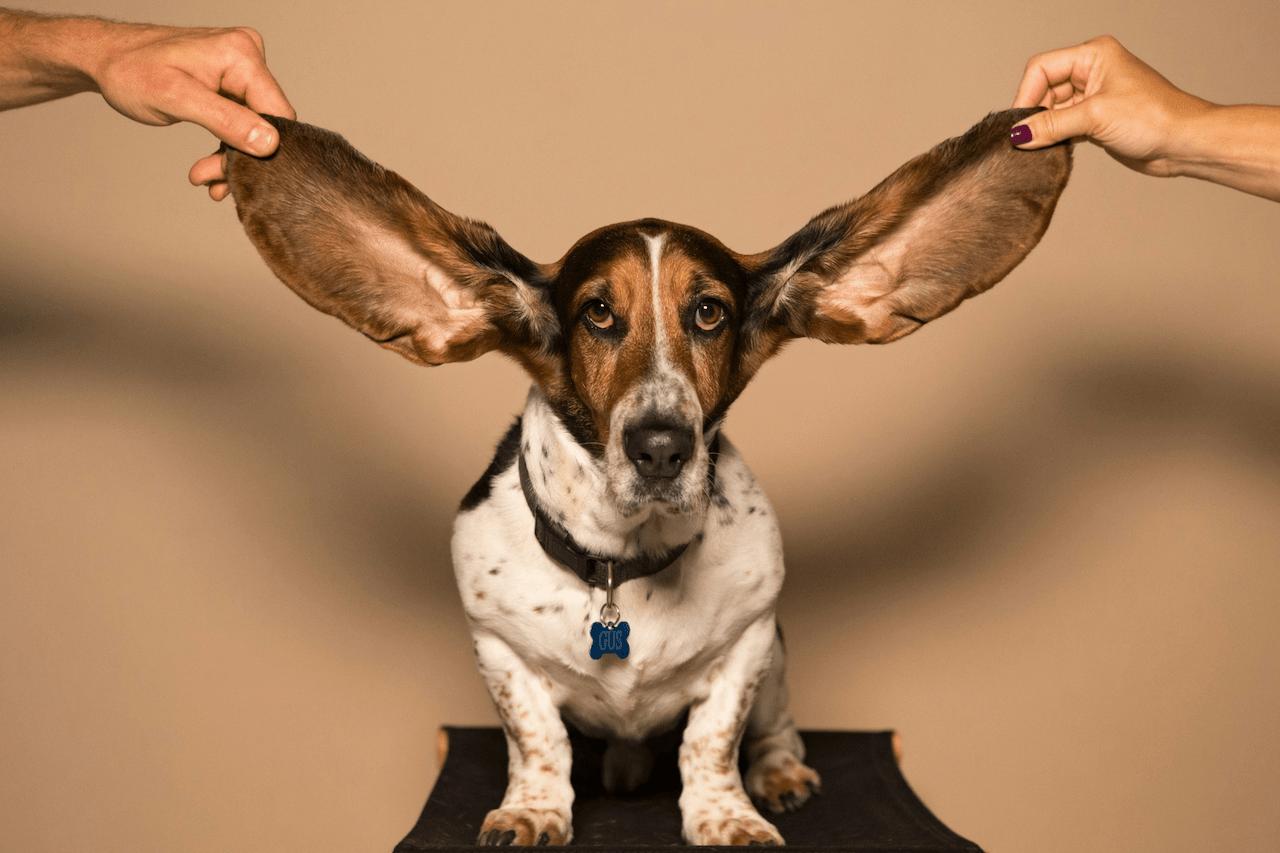Do you have a dog that flaps their ears a lot? Or maybe they scratch them constantly? Your dog may have an ear infection!
Ear infections are a common health concern in our pets and can be very painful for them. Ear infections that are left can lead to ear drum rupture, hearing loss, aural haematomas (large blood filled cysts on the ears) and even facial paralysis. Getting ear infections promptly treated is valuable in relieving pain and preventing these possible complications.
This article delves into ear infections, their causes, risk factors, diagnosis, treatment and prevention so that you can help your dog if they are ever in this situation.
Contents:
•What is an Ear Infection?
•Predisposing Factors for Ear Infections
•Causes of Ear Infections
•Signs of an Ear Infections
•Diagnosis of an Ear Infection
•Treatment of an Ear Infection
•Preventing Ear Infections
•How To Clean Your Dog’s Ears
•Frequently Asked Questions
What is an Ear Infection?
An ear infection, or Otitis Externa, is inflammation of the external ear canal. 1 in 5 dogs experiences an ear infection in their life, making it one of the most common conditions affecting dogs. Ear infections typically involve the overgrowth of native bacteria or yeast that lives on the skin in response to an underlying health condition or trigger.
Predisposing Factors for Ear Infections

The underlying reasons that can increase your dog’s risk of developing ear infections are:
- Large floppy ears
- Hair in the ear canals
- Swimming regularly
- Narrow ear canals
- Breed, e.g. Cocker Spaniels, Miniature Poodles, Old English Sheepdogs, Labradors
- Underlying health conditions e.g. Allergies or Hypothyroidism
Moisture and heat provide the perfect conditions for the overgrowth of microorganisms, which is why dogs with large, floppy ears or hairy ears tend to be prone to infections. Swimming or any activity that allows the access of water into the ear canal can provide moisture suitable for microorganism growth. It is also worth noting that overcleaning of the ears can contribute to an ear infection developing.
Any condition that potentially compromises the condition of the skin can make the ears vulnerable to infection. This can include parasites like mites, hormonal imbalances like Hypothyroidism or Cushing’s Disease, foreign bodies (e.g. grass seeds), auto-immune/immune mediated skin conditions, viral diseases (e.g. Distemper), glandular abnormalities, etc. The most common underlying health condition leading to recurrent ear infections is an allergy. Studies show that 43% of dogs with chronic or recurrent ear infections have an allergy as well. Be sure to chat to your vet about how you may be able to help address a potential allergy.
43% of Dogs with chronic or recurrent ear infections have an underlying allergy.
Causes of Ear Infections

<br>
The typical causes of an ear infection are bacteria or yeast (Malassezia pachydermatis). The two different shapes of bacteria that your vet will look for are cocci (dots), such as Staphylococcus pseudintermedius or Staphylococcus canis, and rods, such as Pseudomonas species. Rods are shown in the image above.
All of these organisms are commensal, which means they normally inhabit the skin and/or ear canal, but typically do not cause problems. An ear infection occurs when there is an overgrowth of one of these organisms, usually triggered by an underlying cause such as irritation of the skin, a cut or abrasion within the canal, moisture or heat.
Signs of an Ear Infection
A dog that is shaking its head or scratching its ears is the most common sign of an ear infection, however, these may present alongside:
- Pain
- Foul Smell
- Redness of the ear and canal
- Lesions on the ear
- Swelling
- Dry, flaking skin
- Discharge – may be cream like pus or a thick brown/black waxy discharge
If you notice your dog showing any of these signs, it is best to book them in for an examination with your local vet.
Diagnosis of an Ear Infection

Diagnosis of an ear infection will be made by your vet during an examination. They will use an Otoscope to examine the ear canal and condition of the eardrum (Tympanic membrane). The ear canal may be inflamed, contain excess hair, present with a discharge or be swollen. They will also look for foreign bodies, such as insects, grass seeds or pieces of stick, which could cause irritation.
Following this, a sample of the ear will be taken with a cotton tip and smeared onto a slide. The slide is stained and examined under the microscope to determine the cause of the infection; bacteria or yeast.
During the examination, your vet will also ask about your dog’s skin and look for any skin irritation to determine if an underlying health condition may be present.
Treatment of an Ear Infection
Before starting treatment, your vet may clean out your dog’s ears. This process helps to remove debris and excess wax from the ears, as well as breaking down any protective films that bacteria may have formed. By doing this, it is easier for the medication to penetrate into the ear canals and target the deeper infection.
Ear infections are treated with a topical medication. This is usually a pump or drop that is applied directly to the ear canal, often twice a day. However, different vets may use different formulations and there are formulations available that require one application per week. These may be good options for dogs with chronic or recurrent ear infections that have become ear shy or resistant to having their ears touched. In most cases, treatment will last for 5-10 days.
How To Instil Ear Drops
Your vet may show you how or administer the first dose of medication during your consultation and will also advise of the appropriate dose and frequency of administration. If this is the case, be sure to follow their advice. I have listed the general steps below though.
- Raise the ear pinna (flap) and hold straight.
- Point the nozzle of the medication into the ear canal.
- Administer as directed (I typically advise one firm pump).
- Remove the nozzle from the canal and massage the ear and canal for 1-2 minutes.
- Repeat on the other ear if directed to.
Preventing Ear Infections

For dogs that are prone to ear infections or have some predisposing factors, there are some steps that you can take at home to help prevent infections. Primarily ear cleaning can help to prevent infections. Dogs prone to ear infections can have their ears flushed once or twice a week with a balanced ear cleaner, such as Otoflush, EpiOtic or Otoclens. This can also be done after your dog has been swimming to prevent infections.
If your dog has an underlying health condition that is contributing to their ear infections, be sure to discuss with your vet how to manage that condition to prevent them developing further infections.
You can also support your dog’s skin barrier and natural defences. Feeding a premium, quality, nutritionally balanced and complete diet should provide sufficient omega fatty acids, zinc and Vitamin E to condition the skin and strengthen the skin barrier. However, skin supplements may also provide some benefit, such as Fish Oil (sardines, salmon and mackerel are high in omega fatty acids), Megaderm, or Skin and Coat chews. Omega fatty acids have also been shown to have some anti-inflammatory properties.
How To Clean Your Dog’s Ears
When cleaning your dog’s ears, it is important to use the right products and perform the cleaning correctly to prevent overcleaning or infections from developing.
Tools:
- Ear Flush e.g. Otoflush
- Tissues, cotton balls or cotton pads
Steps:
- Lift the ear pinna (flap) to expose the canal.
- Point the nozzle tip of the ear flush into the canal and squeeze into the canal until liquid starts to overflow.
- Massage the ear for 1-2 minutes.
- Wipe the excess liquid and debris away with a tissue, cotton ball or cotton pad.
- Repeat until cotton comes away clean.
Never use a cotton tip in the ear canal as this may damage the eardrum or cause pain.
Frequently Asked Questions

How Important Is Treatment?
Ear infections can be very painful for our dogs. Severe infections can also damage the eardrum, infect deeper into the ear (Otitis Media) or lead to deafness. For this reason it is important to get treatment started as soon as you are able to book in with your regular veterinarian.
Do I Need Another Consult for Recurrent Ear Infections?
Yes. Each new infection that your dog develops may have a different cause. It is important that each time your dog develops an infection they are re-examined and the cause of the infection accurately determined to ensure the correct treatment is being used.
Repeatedly using the same medication could lead to bacterial or yeast resistance, which reduces the effectiveness of the medication and could make future infections harder to treat.
Can Dogs Get Ear Mites?
Dogs can get ear mites. However, ear mites are prevented and treated by most flea and tick preventatives, meaning they are rarely seen.
Are Ear Infections Caused By Ear Mites?
Ear mites are commonly suspected to be the cause of ear infections in pets. Ear mites can cause irritation and can potentially compromise the skin, leading to a bacterial or yeast ear infection. Ear mites can be treated with a flea and tick preventative.
Should I Pluck The Hair From My Dog’s Ears?
To pluck or not to pluck, that is the age old question! For the majority of dogs, it is not recommended to pluck the hair from their ears. Plucking the hairs can lead to micro-abrasions in the skin, which may allow an ear infection to develop. For most dogs, hair around the ears can also help to prevent foreign bodies and irritants from getting into the ear canal. Plucking the hair from the ears is also a painful process that many dogs may not like or tolerate.
However, if your dog has particularly hairy ears and is getting recurrent or chronic ear infections, your vet may recommend plucking the hairs (often with a trained groomer or while under anaesthetic for a professional ear flush) to improve air flow to the canal and prevent heat and moisture getting trapped.
Can I Cut The Hair Around the Ear Canal?
While it is common to trim the hair on the ears at the groomers to prevent knots and matting, the hair in or around the ear canal should not be cut. This hair may be irritating when it regrows, which could lead to an ear infection.


